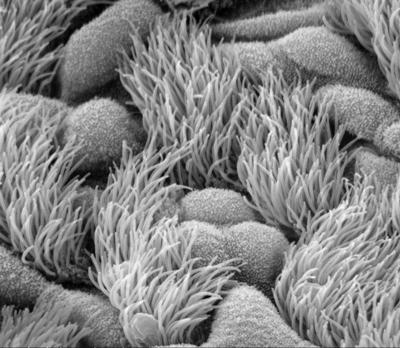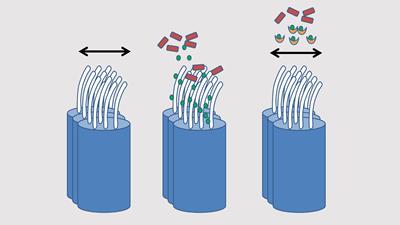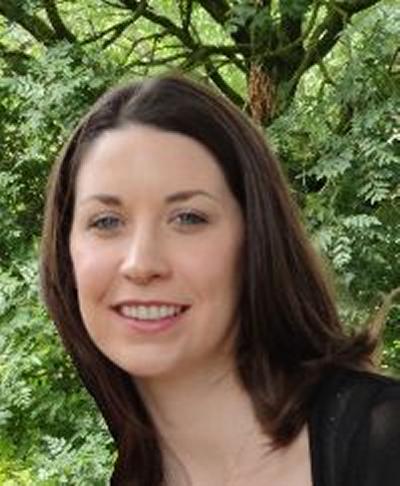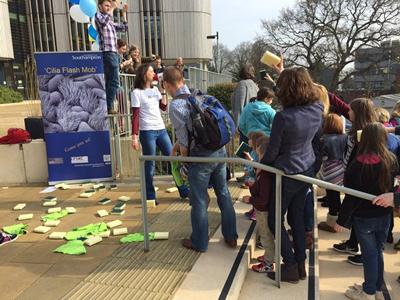Project summary
Cilia are moving ‘hair-like’ structures that line our airways (figure 1). Their coordinated beating removes bacteria that are trapped in mucus, defending our lungs from infection.

(Figure 1 courtesy of the Southampton Biomedical Imaging Unit)
Some bacteria produce proteins called lectins that stop cilia movement enabling them to establish an infection (see figure 2 below).
We are chemically modifying simple sugars which will actively block the bacterial lectin from binding to host sugars at the cilia surface (figure 2).
By protecting cilia movement the bacteria can be cleared and infection prevented. As the sugars work by a completely different mechanism they will not be affected by antibiotic resistance. We aim to develop sugar-based treatments that can help reduce hospital acquired infection and protect vulnerable patients with lung disease or poor immunity.

Diagram of bacteria attacking airway cells
Left: rows of healthy airway cells (blue) with cilia (white) at their surface moving forward and back in a coordinated manner (arrow) to clear mucus and infective agents.
Centre: Bacteria (red) making lectin proteins (green) which can bind to sugar groups on surface of airway cells causing cilia to stop working and allowing bacterial infection to establish.
Right: Sugar therapy (yellow) blocking bacterial lectin (green) protecting the cilia (white) function.



